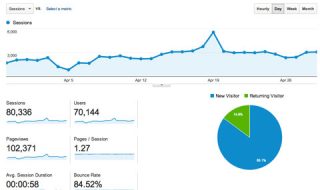
Call centers use a variety of different systems that integrate hardware and programming to enable call center agents to provide optimal service to callers. An ACD, short for “automatic call distributor”, is used by staff in an ACD call center to effectively route incoming and outgoing communications.
It was the development of this technology that made call centers possible. Read on to learn how exactly call centers make use of them nowadays.
How ACD works
ACDs receive and process incoming calls to a call center. They use the responses that callers give to a series of prompts to identify the reason for their call. The ACD has a database that it draws from about the agents who are present and their qualifications. It uses prompts from the caller and the information it has to determine which call center agent is ideally suited to address each caller’s needs.
Afterward, they direct the call accordingly. In simplest terms, the ACD directs communication traffic. Its goal is to help ensure that each caller receives assistance as quickly as possible through their first point of contact in the call center.
Expanded communications
As call centers have advanced, ACD has been expanded to handle multiple forms of communication. There are many reasons why customers may wish to contact a call center agent by other means.
For example, a young parent with toddlers may find that it is too noisy for them to handle matters verbally because they are frequently disrupted. A person who is hard of hearing may also prefer non-verbal communication. Whatever the reason, ACD technology has evolved to ensure that customers are not limited to contacting a call center by phone anymore.
Sophisticated ACD systems receive communications from multiple input sources, including chat, text messages, emails, faxes, and phone calls. The ACD handles all of these communications the same way it handles incoming calls. Its objective is to identify the reason for contact, identify the available agent who is best suited to the contact’s needs, and then direct the customer to that agent.
Identification verification

YC-Backed Next Caller Brings Smarter Caller ID To Businesses And, Soon, Phone-Based “Shopping”
An ACD can also authenticate a caller’s ID. It is capable of using systems such as Automatic Number Identification (ANI) to confirm the caller’s number and connect that number of an account. This helps streamline the tasks that call center agents must perform.
Simplifying sales
Advanced ACD applications can facilitate sales by enabling callers to place orders through an automated system. Once the order is placed, it can be compiled in an email or fax and provided to the customer and sales representative, offering written confirmation of the order.
This reduces the amount of time that sales staff spend processing orders. An ACD can even forward the order to the appropriate staff who then bill the client or compile the order and ship it.
Gathering data
ACD systems are able to maintain records of contact volumes, incoming communication methods, contact wait times, and average response times. They can also be used to conduct contact surveys to determine satisfaction levels and identify areas for improvement. The ACD can use this data to provide call center management with actionable information to help them make informed decisions about how to improve customer service.
Managers can track which times of day they have the greatest need for agents, what the most popular contact methods are, how effectively the system is identifying the best agent to serve the caller, and agents who may be taking too long to address caller needs.
Advantages of ACD
ACD programs enable call centers to ensure all customers are provided with fast, effective service. They help reduce wait times and increase response times so that the caller has their matter resolved as quickly as possible. They can reduce processing times for sales orders and provide real-time data that enables managers to adjust operations to improve customer satisfaction.
Call centers are able to reduce overhead with increased efficiency, which means the ACD technology facilitates cost savings. Their ability to increase initial contact resolution for contacts is also one of several factors that helps ACD technology improve customer satisfaction.




